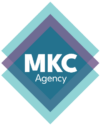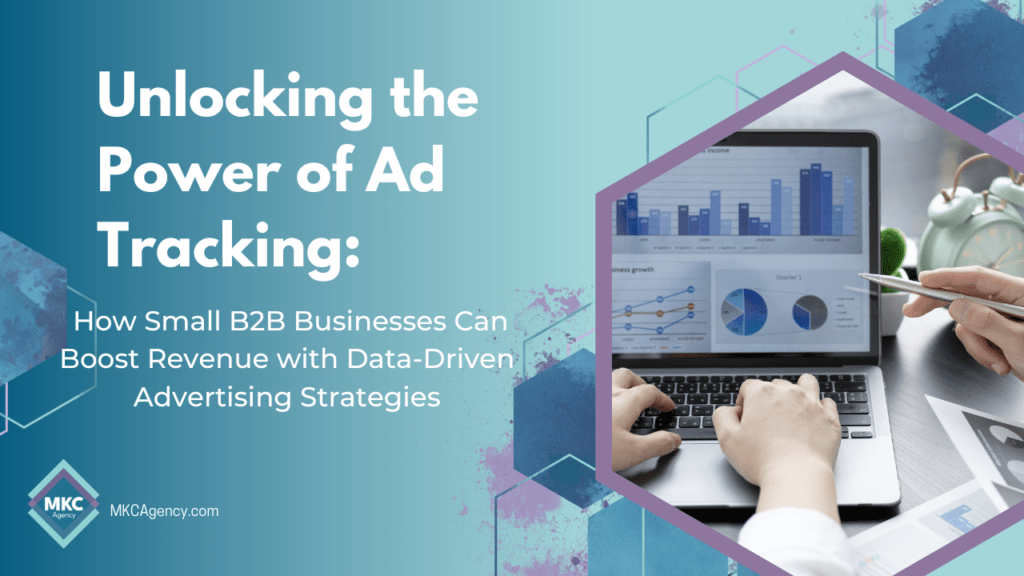Small B2B businesses like telecommunications companies and managed service providers (MSPs) often need more resources to devote to marketing. However, leveraging ad tracking can help these businesses maximize their ROI and generate more revenue. In this post, we’ll explore how small B2B businesses can use ad tracking to their advantage on various platforms.
What platforms should I be using?
Google Ads
Google Ads is an excellent platform for B2B businesses looking to increase their online visibility. With Google’s targeting options, companies can reach their ideal audience at the right time. Here are some tips to get started:
- Set clear goals: Determine what you want to achieve with your Google Ads campaign. Do you want to increase website traffic, generate leads, or boost sales? Each goal requires a different approach, so be specific about your goal.
- Use targeted keywords: B2B businesses should use long-tail keywords to reach their ideal audience. For example, a telecommunications company could use keywords like “business phone systems” or “VOIP providers” to attract relevant traffic.
- Create compelling ad copy: B2B buyers seek solutions to their problems. Craft ad copy that speaks to their pain points and offers a solution. Use strong calls to action to encourage clicks.
- Monitor and adjust: Use ad tracking to monitor the performance of your ads. Adjust your targeting, keywords, and ad copy to improve performance.
LinkedIn Ads
LinkedIn is the largest professional networking platform, making it ideal for B2B businesses. Here’s how to get started with LinkedIn Ads:
- Define your target audience: Use LinkedIn’s targeting options to reach decision-makers in your target industry. You can target by job title, company size, industry, etc.
- Use sponsored content: Sponsored content allows you to promote your brand’s content to your target audience. This is an excellent way to build brand awareness and generate leads.
- Leverage retargeting: Use LinkedIn’s retargeting options to reach people who have previously engaged with your brand. This can be a highly effective way to convert leads into customers.
- Measure your results: Use LinkedIn’s ad analytics to track the performance of your ads. Adjust your targeting, content, and budget based on your results.
Facebook Ads
Facebook is the largest social media platform, making it an excellent platform for B2B businesses looking to reach a broad audience. Here’s how to get started with Facebook Ads:
- Define your target audience: Use Facebook’s targeting options to reach decision-makers in your target industry. You can target by job title, company size, industry, etc.
- Use video ads: Video ads are an excellent way to showcase your brand and products. Create short, compelling videos that highlight your business’s value proposition.
- Leverage retargeting: Use Facebook’s retargeting options to reach people who have previously engaged with your brand. This can be a highly effective way to convert leads into customers.
- Monitor and adjust: Use ad tracking to monitor the performance of your ads. Adjust your targeting, content, and budget based on your results.
- Goals and Applications
How do I set goals?
Setting goals for ad campaigns is crucial for measuring their success and optimizing them for better performance. When setting goals, it’s essential to keep them specific, measurable, attainable, relevant, and time-bound (SMART). Here are some tips on setting practical goals for ad campaigns:
- Identify the objective: The first step is identifying the campaign’s purpose. Do you want to generate more leads, increase website traffic, boost sales, or promote a new product or service? Be clear about the objective before setting goals.
- Determine the target audience: Identify the target audience for the campaign, including their demographics, interests, and behaviors. This will help you tailor your messaging and targeting for maximum impact.
- Set specific metrics: Determine the metrics you will use to measure the campaign’s success. For example, if the objective is to generate more leads, the metrics could be the number of form submissions or phone calls. If the aim is to increase website traffic, the metrics could be pageviews or time on site.
- Determine the benchmark: Before setting goals, determine the current performance of the campaign or a similar campaign to establish a benchmark. This will help you set realistic and achievable goals.
- Set realistic goals: Make sure the goals are realistic and achievable. Set goals that are reasonable and reasonable. Use the benchmark data and industry benchmarks to guide you in setting goals.
- Set a timeframe: Set a timeline for achieving the goals. This will help you stay focused and motivated to achieve them.
- Monitor and adjust: Monitor the campaign’s progress regularly and adjust the goals if necessary. Adjust the messaging, targeting, or budget to improve performance if the campaign is not performing as expected.
Following these tips, you can set practical goals for your ad campaigns and measure their success. Remember to keep the goals SMART and adjust them as needed to optimize performance.
Small B2B businesses should have clear goals for their ad campaigns. Here are some targets to consider:
- Increase website traffic: Use Google Ads or Facebook Ads to drive traffic to your website. Use targeted keywords and compelling ad copy to attract relevant traffic.
- Generate leads: Use LinkedIn Ads or sponsored content on Facebook to generate leads. Offer free trials or demos to encourage sign-ups.
- Boost sales: Use retargeting options on LinkedIn or Facebook to reach people who have previously engaged with your brand. Offer special promotions to encourage purchases.
What are some metrics I should be tracking?
Metrics are an essential part of any ad-tracking strategy. They help businesses evaluate the effectiveness of their advertising efforts and determine what’s working and what’s not. Here are some key metrics that B2B businesses should focus on when tracking their ad campaigns:
Click-Through Rate (CTR): This metric measures the percentage of people who click on an ad after seeing it. A high CTR indicates the ad is compelling and relevant to the target audience. To improve CTR, B2B businesses can focus on creating attention-grabbing headlines, including solid calls to action, and targeting their ads to the right audience.
Conversion Rate (CR): This metric measures the percentage of people who take a desired action after clicking on an ad, such as filling out a form or purchasing. A high conversion rate indicates that the ad is attracting clicks and driving valuable actions. To improve CR, B2B businesses can focus on creating landing pages that align with their ad messaging, optimizing forms for ease of use, and ensuring their ads are targeted to the right audience.
Cost per Click (CPC): This metric measures the average cost of each click on an ad. B2B businesses should keep their CPC as low as possible while achieving their desired results. To lower CPC, companies can improve their ad quality score (which is determined by factors like relevance and landing page experience), use more targeted keywords, and adjust their bid strategies.
Return on Ad Spend (ROAS): This metric measures the revenue generated by an ad campaign compared to the amount spent. A high ROAS indicates that the campaign generates more revenue than it costs. To improve ROAS, B2B businesses can target the right audience, optimize their ad messaging and landing pages, and adjust their bid strategies.
Impressions: This metric measures the number of times an ad is shown to users. While impressions alone don’t necessarily indicate success, they can be a helpful indicator of ad reach and awareness. To increase impressions, B2B businesses can focus on growing their ad budget, improving their ad quality score, and expanding their target audience.
Small B2B businesses, including those in the telecommunications and MSP industries, can significantly benefit from ad tracking. By implementing ad tracking on platforms like Google Ads, Facebook Ads, and LinkedIn Ads, these businesses can measure the success of their campaigns and make data-driven decisions for future advertising efforts.
With clear goals and a solid understanding of relevant metrics, small businesses can track their progress and optimize their campaigns for maximum effectiveness. By leveraging the power of ad tracking, B2B businesses can generate more revenue and achieve sustainable growth.
If you’re a small B2B business in the telecommunications or MSP industries, start implementing ad tracking today to take your advertising efforts to the next level. There’s no better time to get started with a wide range of tools and platforms available. Contact us today for help with ad tracking and growing your business.

